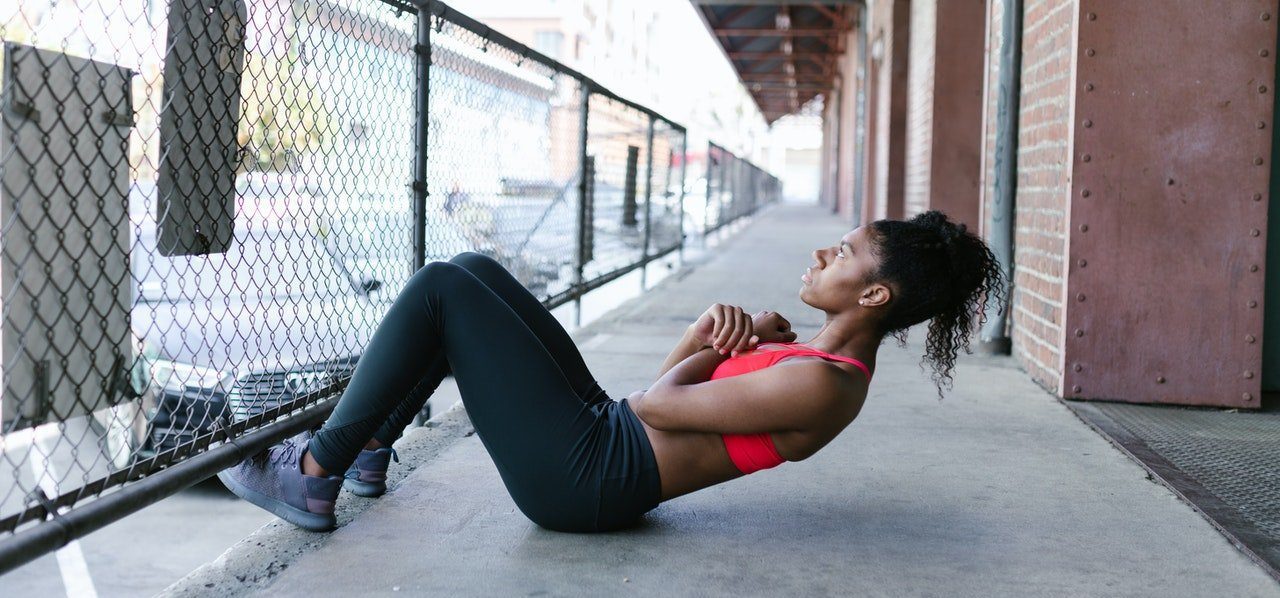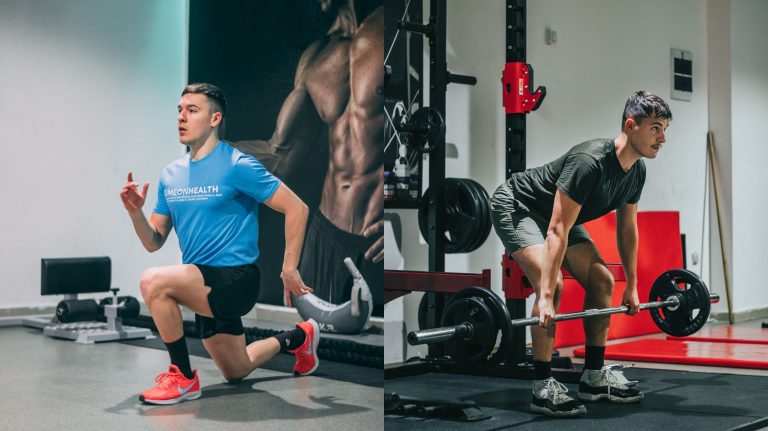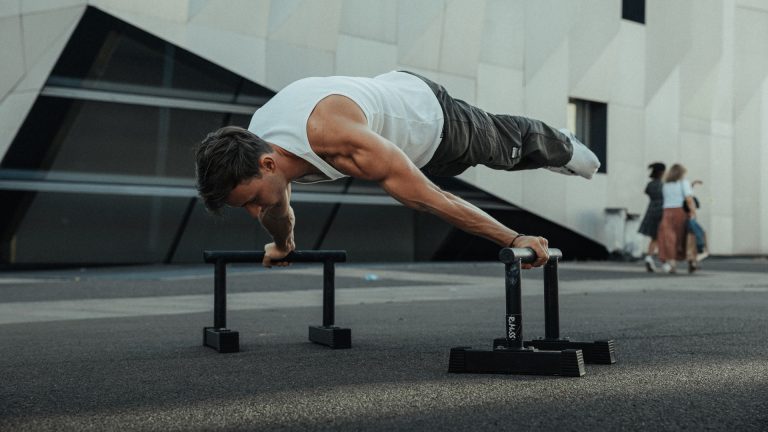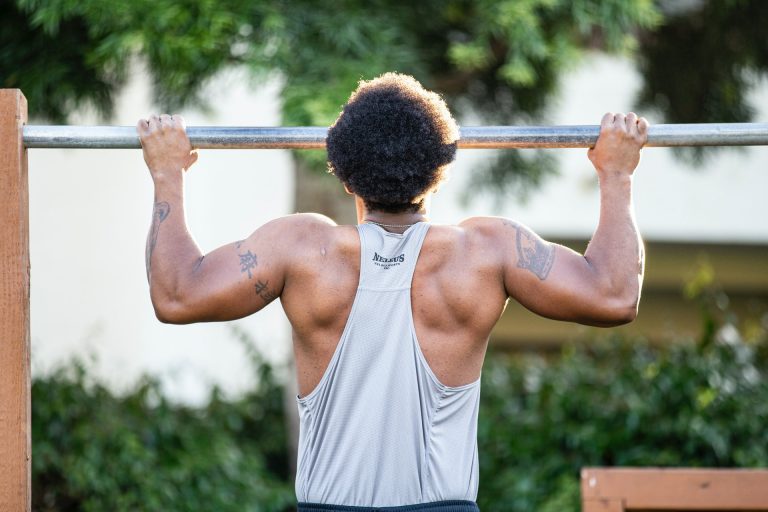Calisthenics on Core Strength-Stability | 5 Effects & Exercises
Training on bars forces us to train core stabilization. From one perspective this is great as it improves joint mobility, functional strength, and core stability. The impact of calisthenics on core strength is quite significant. We’ll see how different calisthenics exercises activate the trunk, what effect bar-training has on core strength and the difference between isometric and dynamic training. Let’s jump into it.
Core Anatomy
While core anatomy is quite complex in its nature, we’ll go over the basic muscles and their main functions. The core muscles can be classified as abdominal (frontal), lateral and lower back (rear) muscles, which can be superficial or deeper.
Some work to flex the core, some to extend the trunk, and the ratio of both keeps our spine neutral. There are also shorter and deeper muscles helping with stability, called stabilizers.
The biggest, most important muscles are:
| Frontal Flexors | Rectus Abdominis and Transversus Abdominis |
| Lateral Flexors | Internal and External Obliques |
| Back Extensors | Quadratus Lumborum, Iliocostalis Lumborum and Latissimus Dorsi |
| Spine Stabilizers | Erector Spinae, Multifidus, Spinalis, Semispinalis |
| Deeper Abdominal | Transversus Abdominis, Diaphragm |
Core Functionality
Functionality in terms of physical health and training refers to our ability to perform fluid and painless movements. The core is a crucial part of this, as any compound movement requires decent core strength and stability.
It is considered a unique point, as the center of mass of the whole body. Having the proper core stability can improve our ability to perform compound movements.
For a functional core, we should aim at improving more abilities at once. These include:
- front, lateral, back, and deep core muscle strength
- front-back, or left-right coactivation, which results in better stability
- proper breath synchronization increased intraabdominal pressure
- consistent activation and passive tension in spine erectors
- sufficient joint mobility in the hips and spine
- sufficient flexibility of specific muscles (hip flexors)
With proper strength level, coactivation, sufficient mobility, and flexibility, we can perform compound movements easier. Coactivation is about activating the antagonist muscles to keep a neutral balance. For example, if we flex on the right, we need to activate the muscles on the left side to counterbalance and not fall off.
Calisthenics Effects On Core Strength
As with most compound movements, there is a high core activation on the plate. With progressive bar training, we can learn to activate the core properly, resulting in improved strength and stability.
Think of it, just doing squats or pull-ups shouldn’t activate the core much, as many people think. Most newbies do targeted abs training, which is completely fine, but indulging the abs correctly with every exercise will lead to faster results and better exercise quality.
Our core as the center of the body connects the lower and upper body/limbs. Imagine doing a heavier squat without proper core activation.
Key point
Without sufficient intraabdominal pressure and core activation, more force and pressure will be placed on the spine, hips, and knees. But a stronger core, with proper synchronization, can lead to improvement on the squat, although it isn’t a core-dominant movement.
The same goes for pull-ups. If you can tighten your core, flex the hips just a bit, and extend your toes out, you’ll gain a lot better control over that movement. No unnecessary twists or wiggles, side to side or front to back will occur. You won’t need to lift your mid and lower body, but you’ll engage in lifting your whole body weight.
Why is calisthenics good for core activation?
It allows us to move in a more dynamic, complex pattern which can stimulate core activation at a higher level. If you sit down and do biceps curls, you don’t do much more than engaging one small muscle. But if you do chin-ups, the same exercise that targets the biceps, you need to grip the bar strongly, activate the core, retract your scapulae and pull yourself up engaging all large back muscles too.
How does Calisthenics improve muscle coordination/coactivation?
Calisthenics is crafted with full-body synchronization and strength in mind. It puts you in a position where you must work hard to stabilize the body, even before the exercise had began. With proper consistency, this stimulates higher nervous system activation and improves intermuscular coordination or specific-muscle synchronization, which allows for optimal activation timing.
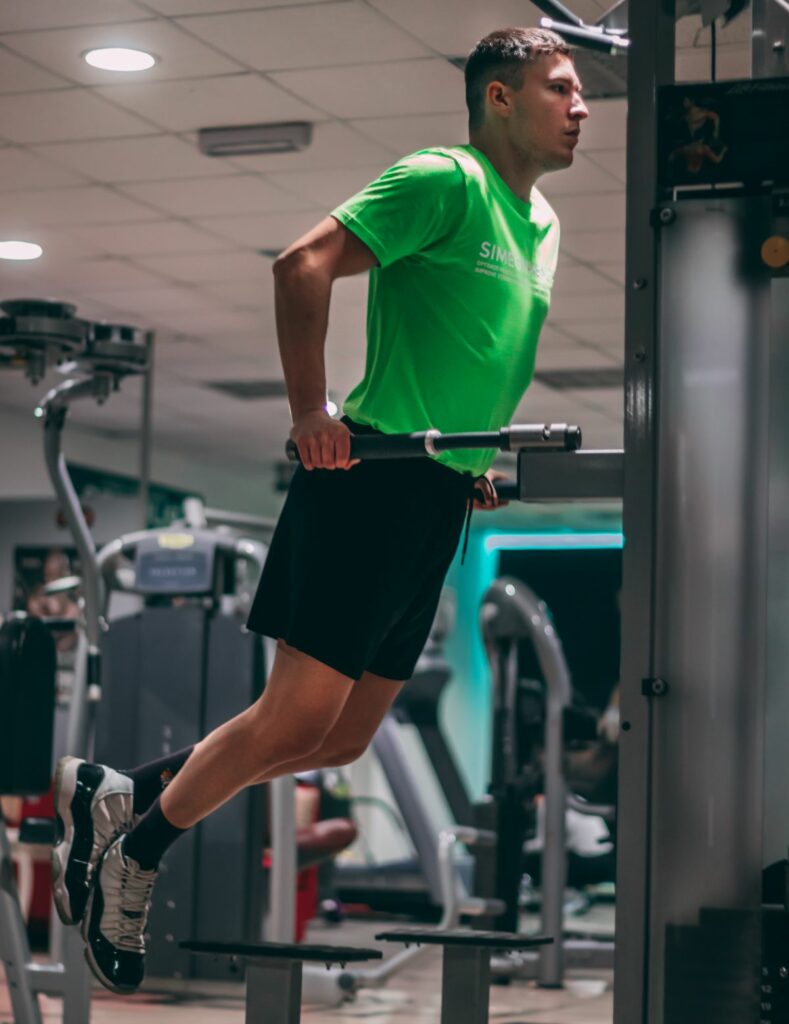
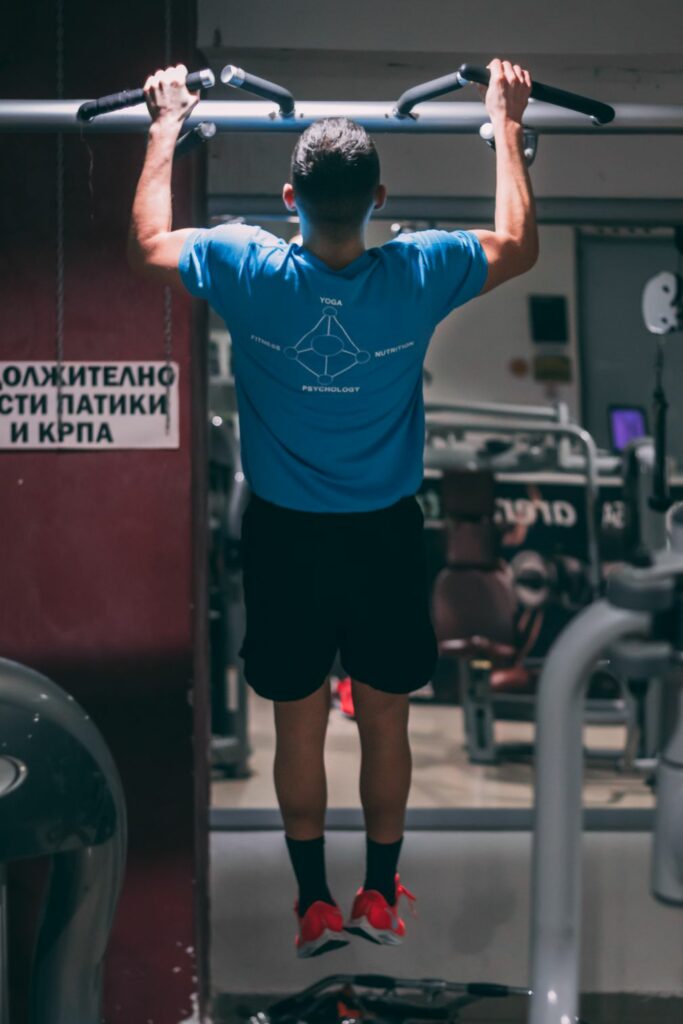
Top 5 Effects and Exercise Tips for Core Strength
If you’re looking for different tips, hacks, and optimal calisthenics exercises that dominantly target the core muscles, this section is for you. From dynamic vs. isometric training, stability-strength relation, to suspension training and injury prevention, we cover it all.
Dynamic vs. Isometric Training
Isometric training prepares the muscle to endure under tension. Dynamic training is more functional because it introduces movement. This movement affects joint mobility, muscle contractions, and range of motion.
When training for core strength, we often think of crunches and planks, but never of compound exercises that aren’t core-specific. But squats, overhead press, and deadlifts all incorporate the core.
In 12 experienced resistance-trained men, they compared the isometric method of the prone bridge, plank for core activation vs. the dynamic 6 RM back squat. The results turned out in favor of dynamic exercise. Squatting activated the erector spinae more, one of the main stabilizers, while the bridge activated external obliques more. (1)
All in all, there was a similar activation in core muscles (including rectus abdominis), but higher activation in spine stabilizers although the exercise wasn’t core-targeting.
Suspension Training Coactivation
To further improve core stability, but also the coactivation of other muscle groups it is important to incorporate stability-challenging exercises. These can be done on tools like sliders, TRX, balance or Bosu ball, unilateral weighted exercises, and rings.
Four suspension exercises were performed and investigated for core activation in 17 men. Exercises such as wheel roll-outs, bodysaw, pike, and knee-tucks were performed and core activation was recorded with surface electromyographic signals. It turns out the best two were roll-out and bodysaw for rectus abdominis and external obliques activation. (2)
The reason why calisthenics can be put in a similar basket to suspension training is, because it is a stability-challenging training. Although you are practicing on static (surface) bars, you are almost always in the air, hanging or supporting your frame, which requires higher levels of activation.
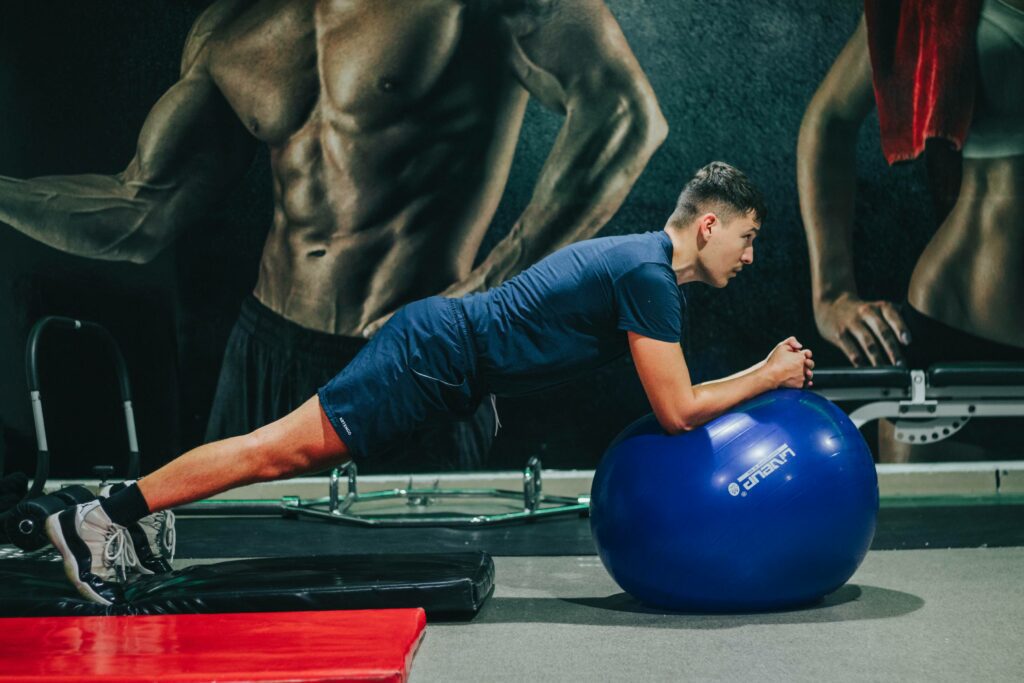
Higher Core Activation Exercises
As we’ve seen, the bodysaw and roll-out are some of the exercises that stimulate maximal activation of the core muscles. We can always do more reps per given exercise, or lift more weight to make any ab-specific exercise harder.
If our main goal is core stability, we must invite variety and movement complexity into our training. From controlled twists, isometric planks and ball throws, there is more science to core stability training.
In a study published in the Journal of Strength and Human Performance, 20 men and women were screened for global core musculature activation through EMG with surface electrodes. They measured the activation of spinal erectors, rectus femoris, rectus abdominis, and external obliques in different exercises. (3)
It turns out crunches were inferior to the other exercises, like towel pike, pike, and V-up. Towel Pike activated the obliques and rectus femoris the most. Along with TP, V-ups elicited significant activation, being superior to the other two exercises.
Strength-Stability Relation
Strength and Stability are related abilities, especially in calisthenics. Think of it, the more balanced and stable you are, the less energy you’ll need to spend in balancing. The more energy and force output will go towards the dominant contraction.
Most of the stability comes with training and is the result of proper and synchronized muscle coactivation, also called intermuscular coordination.
Research shows that by performing core strengthening exercises for 4 weeks, students were able to improve their core stability too. (4) Main muscles screened were the transverse abdominis, multifidus, diaphragm, and pelvic floor muscles.
When we see gymnast athletes, they aren’t superior in terms of strength and muscle endurance to other calisthenics performers, but they move with better coordination and have learned specific motor skills.
key point
Strength and stability are highly related. Strength can be slightly increased by increasing muscle size and more by neural adaptation. But to use that strength in the most efficient manner, we need stability and coordination.
Performance Improvement and Injury Prevention
Core strength is essential for any athlete. Whether you are into running, jumping, calisthenics, basketball, karate, or football it doesn’t matter. While different sports require different muscle sizes and strength or specific motor skills, no sport needs a weak core.
With greater core strength and stability we can move faster, speed up and slow down easier, change direction more efficiently, prevent falls, and jump higher. The force you generate goes through and is controlled by the abdominal and lower back muscles.
Studies show that these muscles act as stabilizers, which is one of their main function. Training those grants better stability and potentially reduces the risk of injury. Also, with training, it is quite hard to activate just the deeper muscles with stronger contractions, without activating synergistic muscles around. (5)
The core also assists in different movements, helping us to lift, push or pull something. It allows spreading force exertion outside. Core strength is also crucial for increasing intraabdominal pressure, to reduce the frictional pressure on the spine when lifting heavy.
Core muscles work hard to stop movement and bring everything to the center, which helps prevent excessively fast stops, twists, and bends of the spine that may result in unwanted injury.
Research Limitations
*Studies have some limitations, important to evaluate the validity of their results. Here’s a highlight of some and NOT ALL studies (and limitation), shown in this article, for context.
- Lack of randomization, specific population studied *resistance trained males, active males, healthy men and women, active students.
- Relatively small sample size *(n)12, (n)17, (n)20, (n)24.
- Potential inconsistency in muscle activation, may alter results *incomplete activation.
- Different people can specifically isolate or activate a specific muscle more or less.
- Unclear adequacy of training metrics *period, frequency intensity, external factors.
- Aged data or data older than 10 years *2010
conclusion
The core musculature is very important in stabilizing the whole body. Calisthenics as training is crafted with core stability in mind. In almost any exercise done with proper form, the core is activated along with other stabilizers. This allows for better left-to-right and front-to-back stability, which can potentially reduce the risk of injury and compressive forces on the spine.
Frequently Asked Questions
Can I increase core strength with calisthenics training?
Yes, you can. Actually calisthenics is very good type of exercise for core strength, if we train properly. Even without major focus on the core, calisthenics is design with core stability and activation in mind. Any exercise that we do, even the non-core ones, should involve the core continually, to keep us balanced.
What are progressive exercises or progressions?
Progressions are harder variations of a specific exercise. They are meant to challenge our current strength and stability, and with enough training we can progress through, to another harder variation. Progressive exercise can be harder variations of a given exercise (position-wise), or they can add weights, or require more balance that makes the exercise harder to perform.
Is core activation important in calisthenics?
Core activation is another crucial part of bodyweight and weight training in general. With a weak core, it is hard to keep our spine neutral and increase intra abdominal pressure (IAP) which is important to reduce the gravitational forces on the spine. The core is a key component of a strong body, it is where the strongest bridge/connection of lower and upper limbs goes through. It helps us to stop, speed up, change direction, balance our body and exert force.
Can I get six-pack abs with calisthenics?
Yes, sure. Calisthenics involves the core to a greater level than many other types of workouts. This is because we need to activate the core even when we are only training for our push, pull or leg muscles, and calisthenics makes it easier for us to do that. However, for a shredded 6-pack on you belly, you need to optimize your diet and do core-targeted training too.
What are the best calisthenics exercises for the core?
Here is a list of the best core strengthening calisthenic exercises: reverse crunches, sit ups, plank (side-plank), wiper plank, scissors, dead bug, leg lifts, hanging lateral leg lifts, dragon flag, human flag and V-ups.

